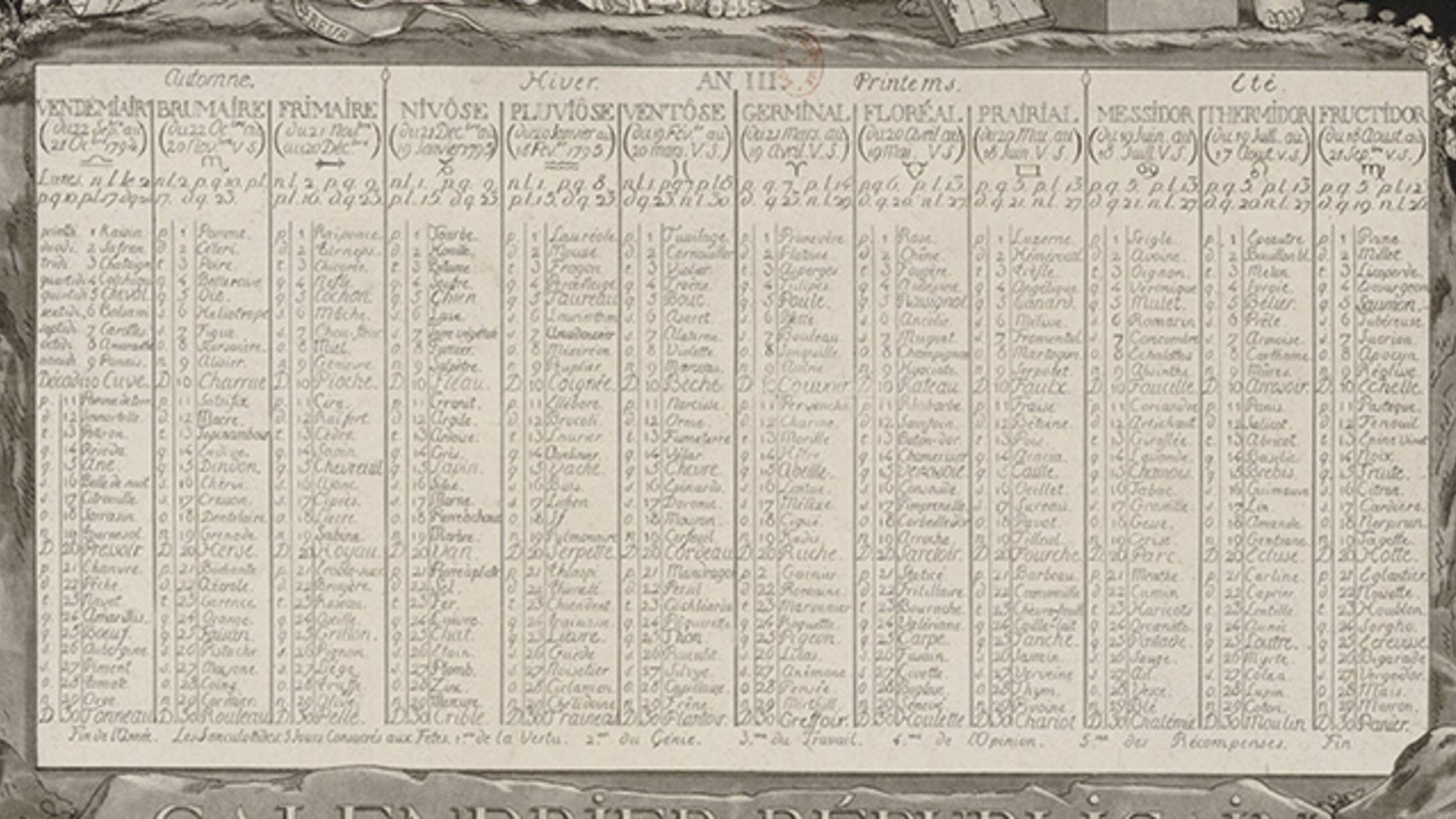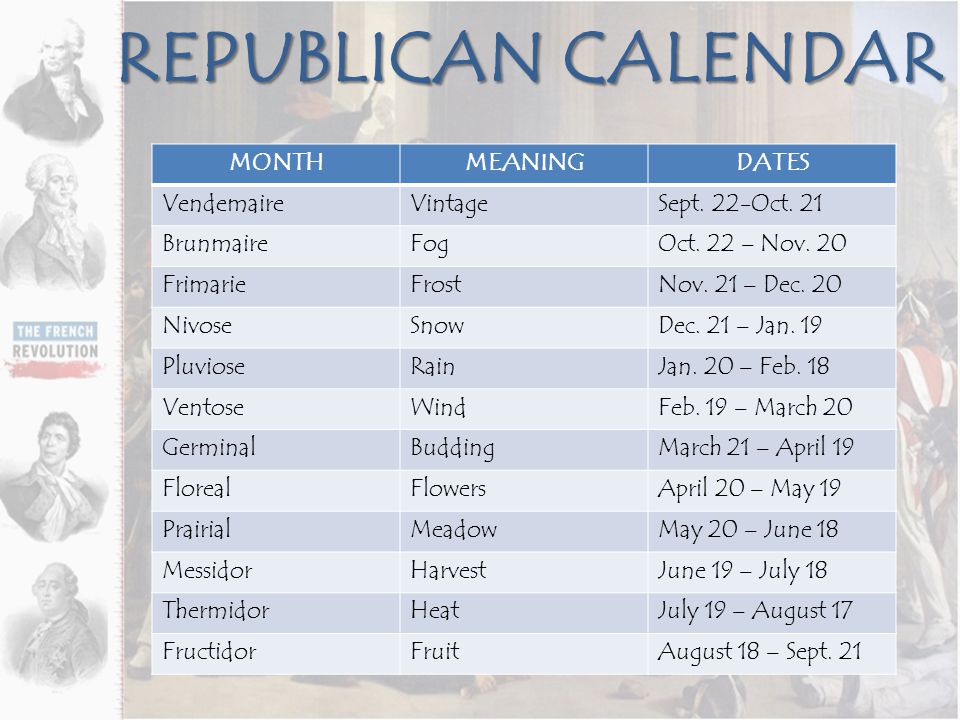

There are exactly 20,871 weeks in 400 Gregorian years, so 29 October 1621 was a Friday just as was 29 October 2021. In a Gregorian mean year, there are 365.2425 days, and thus exactly 52 + 71⁄ 400 or 52.1775 weeks (unlike the Julian year of 365.25 days or 52 + 5⁄ 28 ≈ 52.1786 weeks, which cannot be represented by a finite decimal expansion).
#French revolutionary calendar week iso
5.1.3 Schematic representation of ISO week date.The term "week" is sometimes expanded to refer to other time units comprising a few days, such as the nundinal cycle of the ancient Roman calendar, the "work week", or "school week" referring only to the days spent on those activities. The Geneva-based ISO standards organization uses Monday as the first day of the week in its ISO week date system.

While, for example, the United States, Canada, Brazil, Japan and other countries consider Sunday as the first day of the week, and while the week begins with Saturday in much of the Middle East, the international ISO 8601 standard and most of Europe has Monday as the first day of the week. This arrangement is similar to a week in the New Testament in which the seven days are simply numbered with the first day being a Christian day of worship (aligned with Sunday, offset from ISO 8601 by one day) and the seventh day being a sabbath day (Saturday). Such a week may be called a planetary week.

In English, the names are Sunday, Monday, Tuesday, Wednesday, Thursday, Friday and Saturday, then returning to Sunday. In many languages, the days of the week are named after classical planets or gods of a pantheon. It is the standard time period used for cycles of rest days in most parts of the world, mostly alongside-although not strictly part of-the Gregorian calendar. The week is divided into seven days, and each day into 24 hours, 96 puncta (quarter-hours), 240 minuta (tenths of an hour) and 960 momenta (40th parts of an hour).Ī week is a time unit equal to seven days. Read the legislative texts which established le Calendrier Républicain.Circular diagrams showing the division of the day and of the week, from a Carolingian ms. The calendar was one of the great reforms undertaken by the national Convention, like the Metric system. The Eiffel Tower shown at right was built in commemoration of the French Revolution, and was built for the Paris World’s Fair in 1889. The poets contributed the name of the days, choosing the names of plants, domestic animals and tools the months rhyme three by three, according to the "sonority" of the seasons.

The mathematicians contributed equal month division, and a decimal measures of time. The calendar was adopted more than one year after the advent of the First Republic (there was no year 1), after a long debate involving the mathematicians Romme and Monge, the poets Chénier and Fabre d’ Eglantine and the painter David. The French also established a new clock, in which the day was divided in ten hours of a hundred minutes of a hundred seconds - exactly 100,000 seconds per day. It was used again briefly during under the Paris Commune in 1871. The French Revolutionary Calendar (or Republican Calendar) was officially adopted in France on Octoand abolished on 1 January 1806 by Emperor Napoleon I.


 0 kommentar(er)
0 kommentar(er)
